Texas has a unique environment, which makes it challenging to decide what to cultivate. Fruit trees are a wise and lovely option for any setting, offering important shade and delicious fruits for baking, cooking, or eating straight off the tree! Some plants thrive in all of Texas, while others do not, depending on where you are.
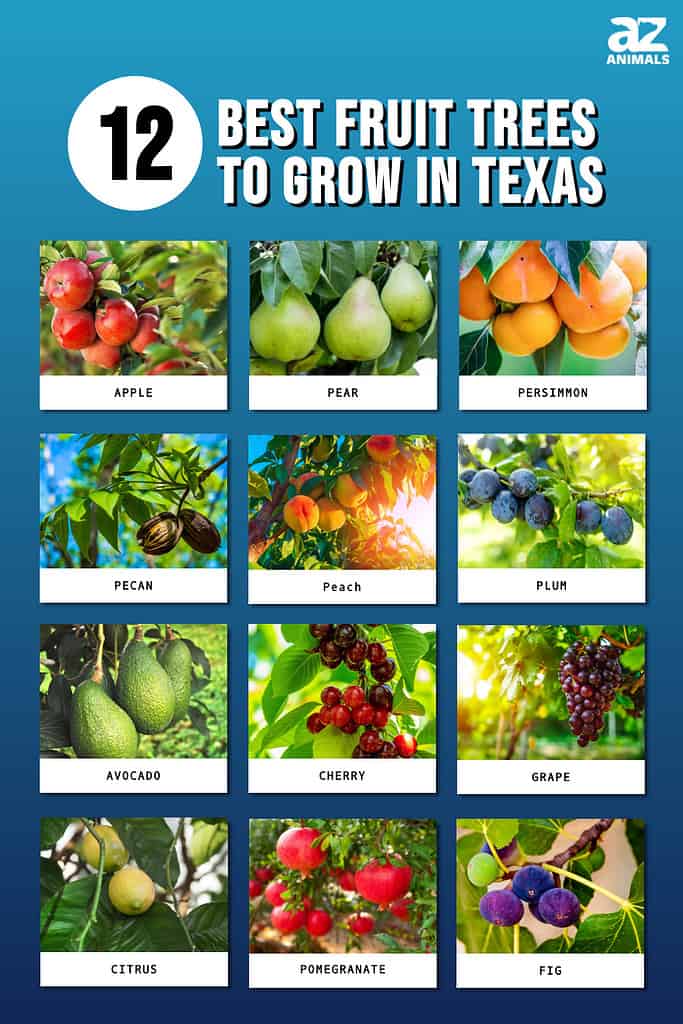
In North Texas, fruit trees are among the most popular choices, largely because they provide the best of both worlds: aesthetic appeal in the shape of lovely, lush greens and a plentiful harvest of delectable fruit. Below, we’ve curated a list of the best and easiest fruits to grow amidst Texas’ climate and three helpful tips on growing them.
The 12 Best Fruit Trees To Grow In Texas
1. Apples
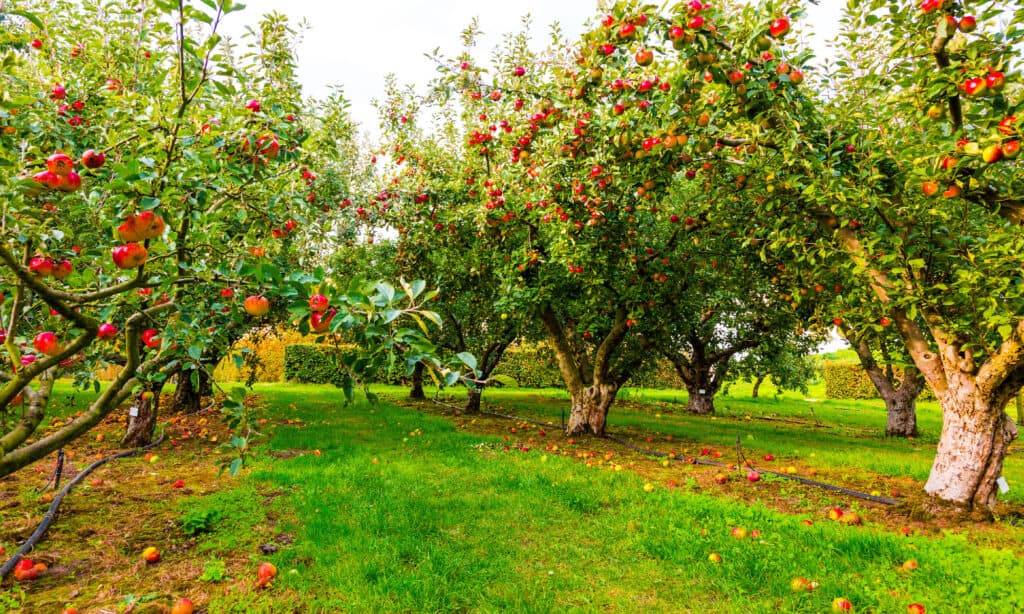
Apples are often picked from July through November in Texas and are staples in many other areas in the United States.
©Tommy Lee Walker/Shutterstock.com
Due to their widespread availability, apples and pears are quite popular in Texas. Apples are often picked from July through November in Texas and are staples in many other areas in the United States. As long as they receive enough sunlight and water, apple trees can thrive in the northern and central regions of Texas. Apple trees generally have a life span of 50-80 years.
Make sure you have enough space because several varieties of apple trees can grow to be 25 feet tall. Apple trees of the Fuji, Granny Smith, Gala, and Golden Delicious varieties are popular and frequently seen in Texas.
2. Pears
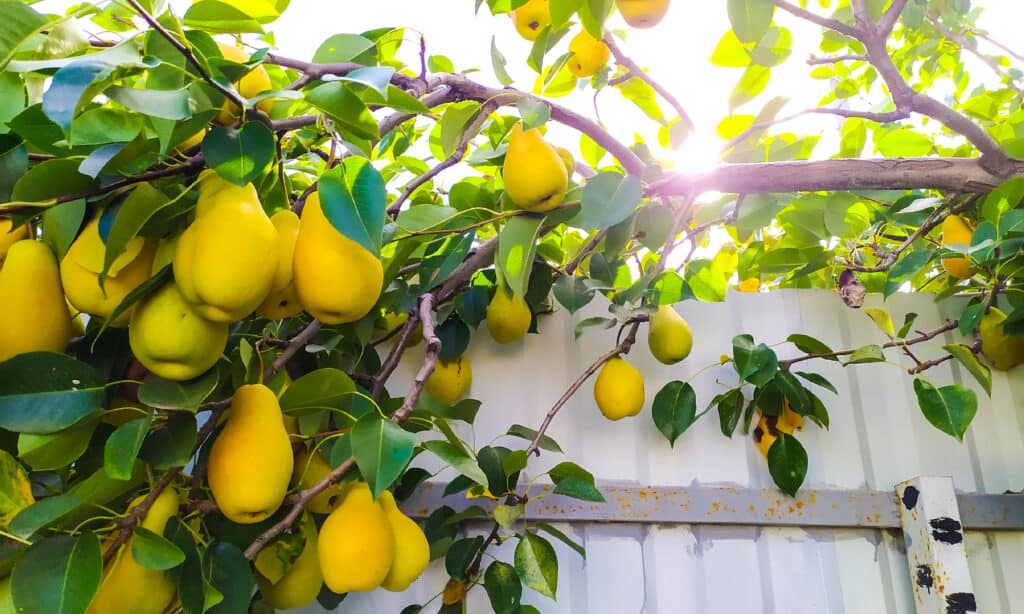
If given the right care, pear trees can develop into drought-resistant trees.
©Victoria.Chemaeva/Shutterstock.com
In Texas, pears do marginally better than apples and are a delectable substitute. Pear trees develop into drought-resistant trees that provide an abundance of fruit each fall if you plant them in areas with good sunlight and give them regular watering. Unfortunately, because they need a winter chill to grow correctly, they do not thrive in the southern regions of Texas. The lifespan of a pear tree is usually 20-40 years. Texas is home to the pear cultivars Beth, Warren, and Ayres. Consider your particular preferences while selecting a variety of pears because flavor varies from variety to variety.
3. Persimmons
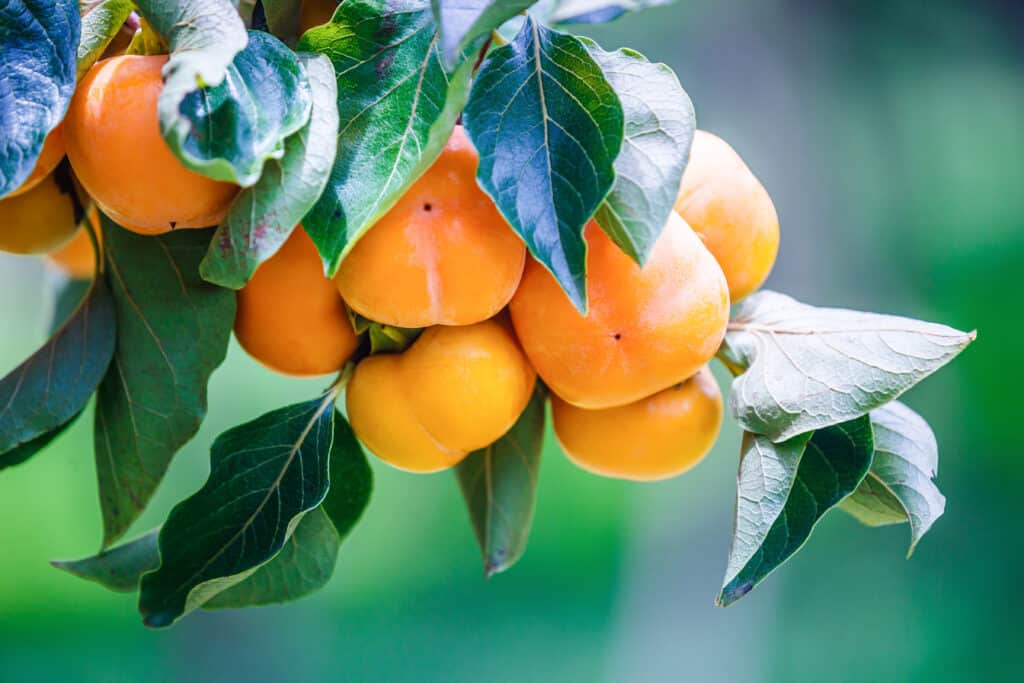
Persimmons have a distinctive flavor and texture despite having a similar appearance to tomatoes.
©nutt/Shutterstock.com
Because they thrive in even the most challenging environments, persimmons are among the most straightforward fruit trees to grow, and they live for 30-50 years. The persimmon, indigenous to the south and southeast, is widely grown throughout Texas. It is excellent for folks new to fruit trees because they are quite simple to grow.
Persimmons are a great topic of conversation because of their bright orange hue and rarity. Persimmons have a distinctive flavor and texture despite having a similar appearance to tomatoes and having their flavor occasionally compared to mangoes.
4. Pecans

Pecans grow in cycles, which makes them peculiar.
©iStock.com/Skapie777
Pecan trees are immensely popular in Texas despite not being considered fruit trees. In fact, Texas’ state tree is the pecan tree. Pecans can also be grown around the state, although central and southern Texas is where they thrive. Pecans grow in cycles, which makes them peculiar. A significant harvest will occur one year, followed by a small or no output the subsequent year. One advantage of pecan trees is that they can live for 75 to over 250 years!
5. Peaches

Peaches can be grown as far east as El Paso, north as the Panhandle, and south as the Rio Grande Valley.
©Crisp0022/Shutterstock.com
There are lots of peaches grown in Texas. In actuality, the state has roughly a million peach trees. The fruit is picked between June and September. They perform best in the state’s cooler regions since they need winter dormancy to produce in the spring. Peaches can be grown as far east as El Paso, as far north as the Panhandle, and as far south as the Rio Grande Valley. Some kinds, such as the Florida Prince and Gulfking, have been bred to flourish in the state’s warmer regions. They thrive because they can withstand heat and cold to some extent, but peach trees live for only about 12 years. To prevent the roots from becoming too moist, you must maintain a decent drainage system.
6. Plums
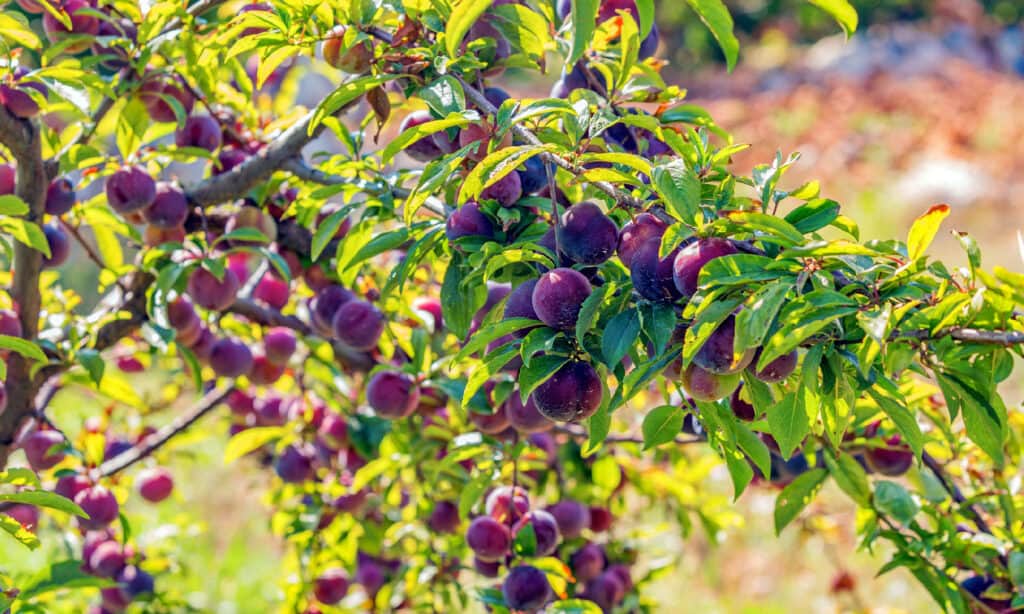
©iStock.com/Funtay
Plums come from the same family as peaches, but they stand out thanks to their attractive purple hue. These trees thrive in central or southern Texas and live for 10-25 years. Since plum trees thrive in a wide range of hardiness zones, the Santa Rosa plum tree is a popular cultivar for growing in Texas. From late summer through mid-autumn, they produce fruit.
7. Avocado
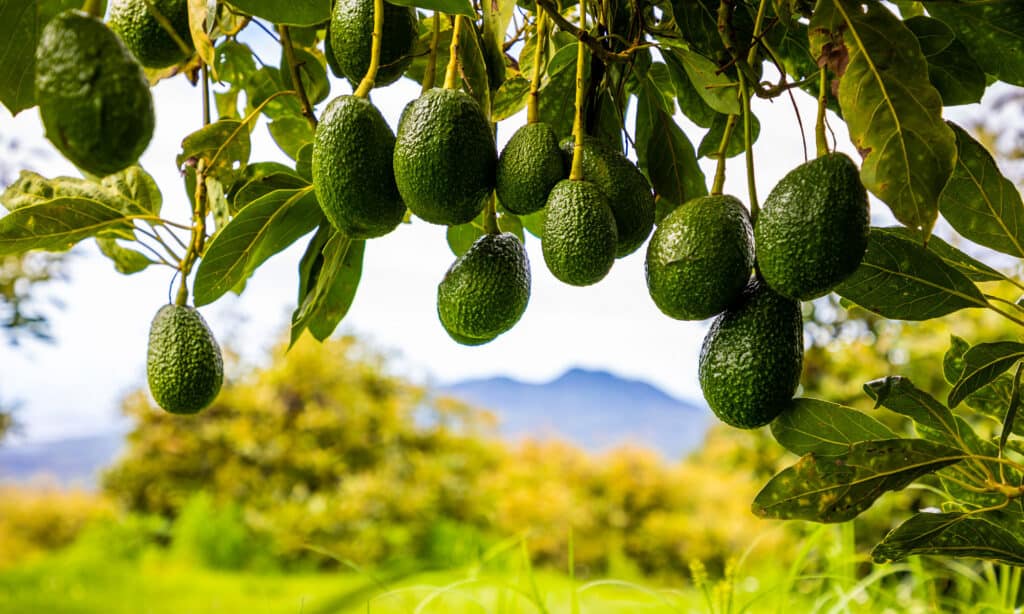
Avocado trees need protection from the cold.
©Alexis Foto Guevara/Shutterstock.com
Many people love avocado trees, although they are tropical in nature and need protection from the cold. Your best option is a 40-gallon indoor Little Cado if you live in Texas’ cooler regions and are prepared for the challenge. Due to the ideal growing conditions for avocados in southern Texas, growers there have the greatest alternatives. Avocado trees, by far, live longer than fruit trees: 200-400 years! And yes, an avocado is a fruit.
8. Cherries

Texas is home to four black cherry species and one chokecherry species.
©iStock.com/fotokostic
Cherries are a fantastic little fruit alternative for Texas. It will take some work to spread to other parts of Texas because they prefer the Panhandle’s milder climate. Cherry trees can also yield lovely blossoms, depending on your choice. Consult your neighbors or the local master gardeners to choose a cherry tree that will grow well in your location. The cherry variety that grows best in Texas is the black cherry. According to the USDA Native Plants Database, Texas is home to four black cherry species and one chokecherry species. The database can detail which kinds thrive in your local county. Depending on the variety, cherry trees live from 10-25 years.
9. Grapes
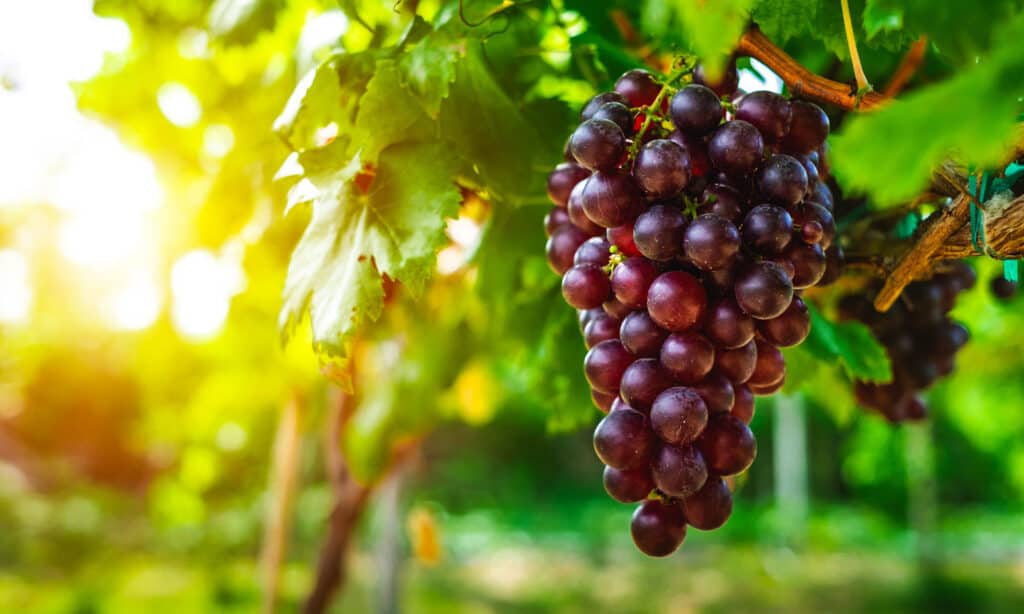
There are six main categories of grapes farmed in Texas.
©Ton Photographer 4289/Shutterstock.com
You usually think of California when you think of grapes. But the majority of Texas has a good growing climate for grapes. French-American hybrids, Vitis vinifera, American varietals, Muscadines, rootstocks, and native species are the six main categories of grapes farmed in Texas. In general, it is recommended to choose grape varieties that are simple to grow in a home garden. They might not produce as much, but they can survive better, as long as 125 years! Vitis vinifera makes up 99 percent of the Texas wine industry.
10. Citrus

Citrus trees can live up to 50 years in the southern United States and coastal Texas.
©iStock.com/paulobaqueta
Lemon, orange, and grapefruit trees, as well as other citrus species, thrive in Texas’ southernmost regions. For producers in the southern United States and coastal Texas, where the climate is consistently warmer, lemons, grapefruits, mandarins, and limes are ideal options, and the trees can live for 50 years. Because of the hot, bright weather, your beloved mandarins and oranges will taste sweeter in these regions. However, the majority of the state does not consistently remain warm enough for citrus trees to flourish.
11. Pomegranates
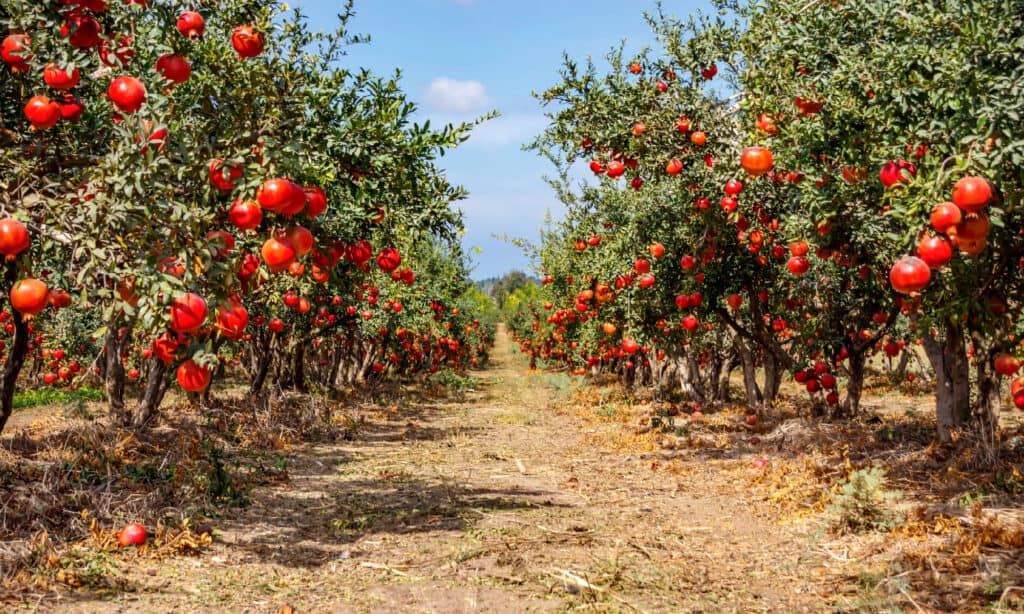
Pomegranate plants thrive in mildly acidic or alkaline conditions.
©iStock.com/Emma Grimberg
Pomegranate trees can also be found in Texas, though they normally thrive in a milder environment like the Mediterranean. These lovely shrubs or trees are drought resistant and have a built-in tolerance for cool winters and scorching summers. Pomegranates thrive in Texas’ hot, muggy climate, but they don’t produce fruit until later in the year, typically from October to December. Pomegranate plants thrive in mildly acidic or alkaline conditions, unlike some other fruit trees requiring a specific soil pH. Like many fruit trees, they dislike wet grounds and are susceptible to root rot, but if well-maintained a pomegranate tree can live 25-35 years.
12. Figs

Figs can flourish in other parts of Texas with the right care but will require attention throughout the winter.
©hubert/Shutterstock.com
Fig trees are an unusual choice in many places, yet they grow well throughout Texas. Because of their eye-catching foliage, fig trees are a rising star among fruit trees. These trees don’t require much maintenance; all they need is consistent watering in a sunny location. They can flourish in other parts of Texas with the right care but will require attention throughout the winter if they are to make their expected lifespan of 30-40 years.
Figs make a delicious summertime treat and are frequently seen in breakfast foods like cereal and yogurt.
When is the Best Time to Plant Fruit Trees in Texas?
In Texas, late December to early March is the ideal period to plant fruit trees. The tree will have plenty of time to develop strong roots over the winter before the hot summer hits, making it easier to acclimate to its new location effectively.
3 Helpful Tips on Growing Fruit Trees in Texas
Texas is a great place to grow fruit trees if you’re interested. One of the best pieces of advice for cultivating fruit trees is surprisingly straightforward: pick plants that will yield fruit you want to eat!
You might be startled to learn that over-attending to your new tree can slow down its growth. You’ll need to water the tree correctly and keep the area free of weeds.
1. Watering
One of the questions often asked is how frequently fruit trees need to be watered. While several factors will influence how much water your tree requires, a good general rule for watering is to water less frequently but slowly and deeply. The ultimate objective is to help your young tree develop a large enough root system to rely only on rainwater for survival.
2. Harvesting
Your fruit tree can need a few years before providing you with a full crop, depending on the kind. Removing all fruit in the first year is often advised, so the tree may concentrate on establishing itself and expanding.
3. Pruning
When pruning their trees, novice gardeners frequently do it at the wrong time of year. Pruning mature fruit trees in the winter is a great way to prepare them for the upcoming spring, summer, and fall.
Summary Of The 12 Best Fruit Trees To Grow In Texas
| # | Fruit Tree | Lifespan |
|---|---|---|
| 1 | Apples | 50-80 years |
| 2 | Pears | 20-40 years |
| 3 | Persimmons | 30-50 years |
| 4 | Pecans | 75 to over 250 years |
| 5 | Peaches | 12 years |
| 6 | Plums | 10-25 years |
| 7 | Avocado | 200-400 years |
| 8 | Cherries | 10-25 years |
| 9 | Grapes | as long as 125 years |
| 10 | Citrus | can live for 50 years |
| 11 | Pomegranates | 20-35 years |
| 12 | Figs | 30-40 years |
Honorable Mention: Other Fruit Trees to Grow in Texas
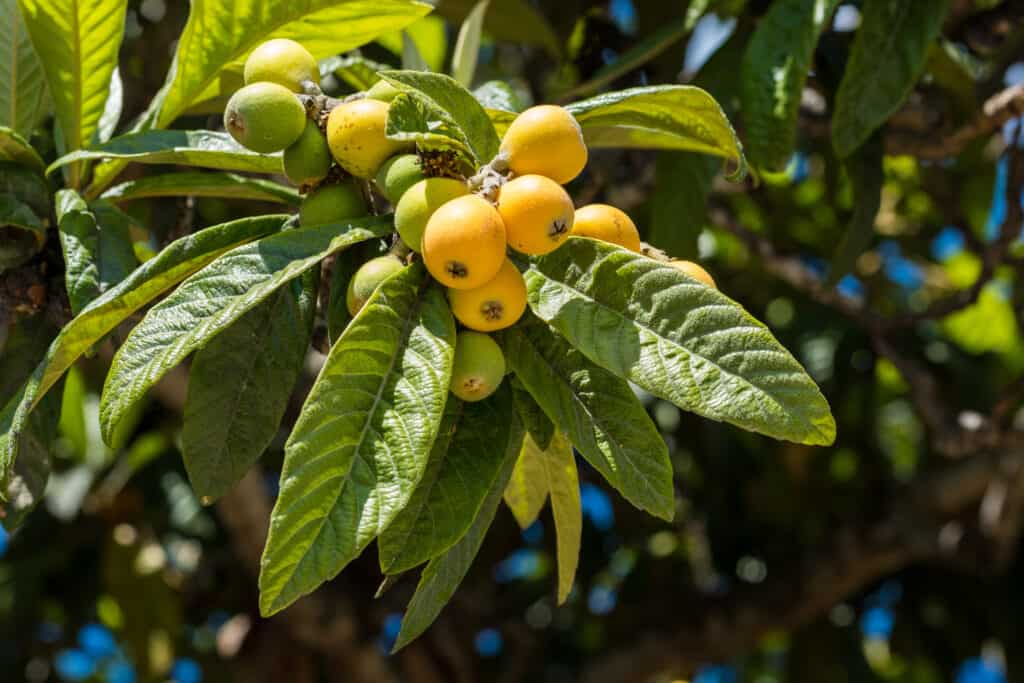
Loquat leaves are large and glossy green on the upper side and rust or white on the underside.
©iStock.com/kornyeyeva
There are over 40 types of fruit trees that all yield different types of fruits. Once you decide on the type of fruit you actually want, these different types of trees are then broken down into specific types of trees – take the apple tree as an example. There are over 7,500 varieties of apples grown worldwide and each one has their own type of tree.
But not all grow best in your area. The climate in Texas is great for many different types of trees and there are many more besides the 12 listed above that do well across the different regions in the state. If the ones listed above aren’t something you would like, here are an additional few that deserve to be mentioned:
- Loquat (Eriobotrya japonica)- this large evergreen shrub or tree is grown for its orange fruit, and its leaves, that is used to make tea. This fruit tree is able to survive in various soil types in the state, particularly in the central, east-west, and south regions, and is relatively pest-free. The loquat tastes like a blend of apricot, cherry, and plum, and although the fruit is not sold in stores because it is too delicate they are often found at farmer’s markets.
- Jujube (Ziziphus jujube) – also known as Chinese dates, and red dates, it is a small deciduous tree or shrub, reaching between 16 to 39 feet, that is in the genus Ziziphus in the buckthorn family Rhamnaceae. It is considered quite hardy and as they are easily adaptable to a variety of climates and soils throughout Texas, they are easy to grow as well. Jujube is resistant to most diseases, as well as pests, so they will do well in your garden.
- Blackberries (Rubus fructicosus) – another easy-to-grow fruit in Texas, due to its ability to thrive in almost any region is the blackberry. While they do have certain pests that like to enjoy them as well, which include spider mites and nematodes, this fruit is not technically a tree but is a deciduous shrub that grows at a fast rate and can be five to nine feet tall. It still is a great choice for your area as it yields delicious fruit that can be enjoyed in the late spring.
The photo featured at the top of this post is © iStock.com/Funtay
Thank you for reading! Have some feedback for us? Contact the AZ Animals editorial team.






